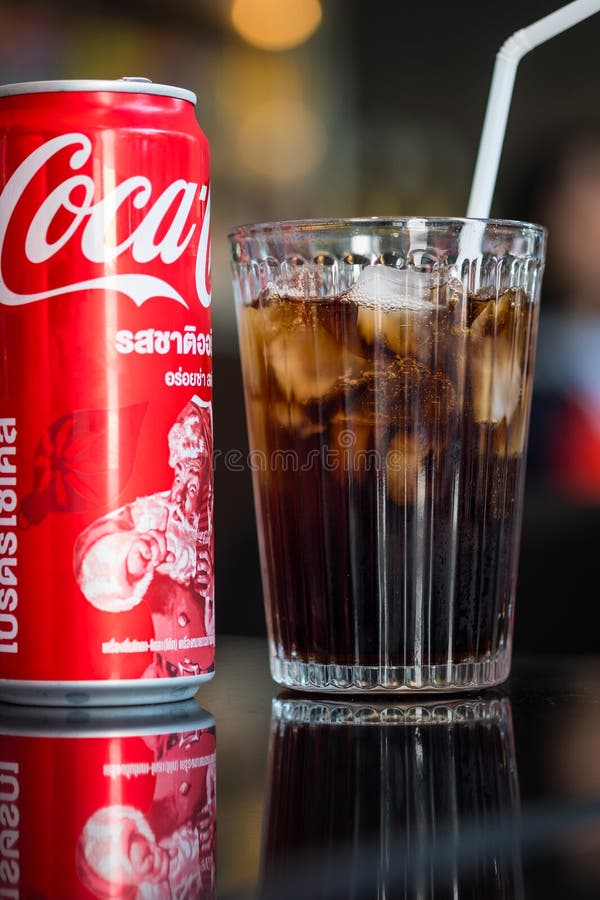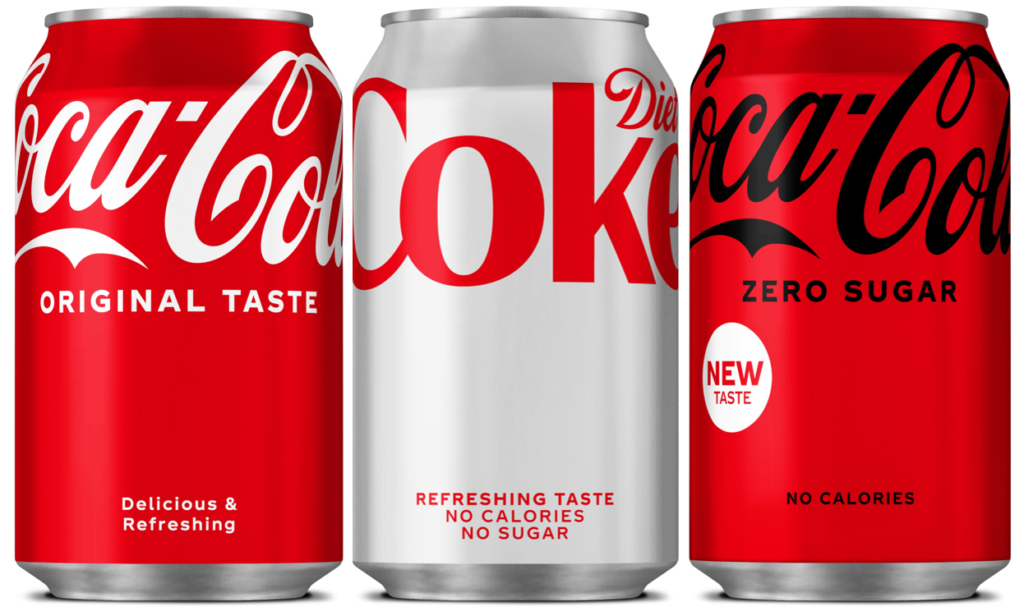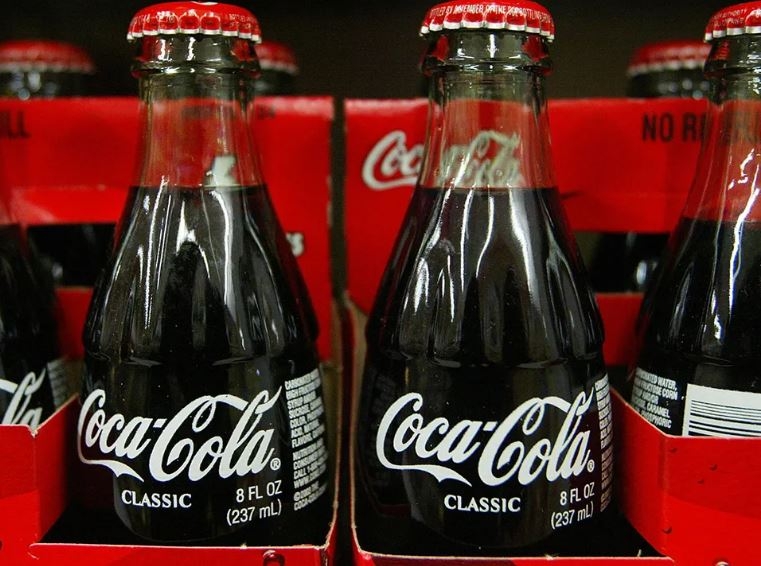Is Coca-Cola Changing Its Recipe? What 2025 Could Bring to Your Glass

Is Coca-Cola Changing Its Recipe? What 2025 Could Bring to Your Glass
The fizzy, brown elixir we know and love as Coca-Cola has graced our taste buds for over a century. Its iconic formula, steeped in secrecy and nostalgia, is as much a part of global culture as the Eiffel Tower or the moon landing. But whispers are growing louder, carried on the currents of evolving consumer preferences and a rapidly changing world. Could the year 2025 mark a seismic shift in the very essence of Coca-Cola? Is the recipe, the sacred cow of the beverage industry, about to undergo a transformation?
The Ghost of New Coke: A Cautionary Tale
The mere suggestion of a recipe change invariably conjures the specter of “New Coke.” In 1985, Coca-Cola, in a bold and ultimately disastrous move, replaced its classic formula with a sweeter, smoother version. The public outcry was swift and visceral. Consumers felt betrayed, their cherished liquid memory tampered with. The return of “Classic Coke” was a resounding victory for tradition, a potent reminder of the deep emotional connection people have with their favorite beverages. This historical misstep casts a long shadow, making any discussion of recipe modification a tightrope walk for the beverage giant.
Shifting Tides: The Consumer Kaleidoscope
The landscape of taste and health consciousness has undergone a radical metamorphosis since 1985. Today’s consumers are more informed, more demanding, and acutely aware of what they consume. Several key trends are putting pressure on traditional beverage formulations:
- The Sugar Scrutiny: Rising concerns about sugar intake and its health implications have led to a surge in demand for lower-sugar and sugar-free options. This isn’t just a fad; it’s a fundamental shift in consumer priorities.
- The “Natural” Imperative: There’s a growing preference for ingredients perceived as natural, clean, and less artificial. This extends to sweeteners, flavorings, and even colorants.
- Personalized Palates: The era of one-size-fits-all is waning. Consumers are increasingly seeking products tailored to their specific dietary needs, health goals, and flavor profiles.
- Sustainability Storytelling: Beyond taste, consumers are increasingly interested in the origin and impact of their food and beverages, from sourcing ingredients to packaging.
Decoding the “Secret Formula”: Beyond the Hype
While the exact composition of Coca-Cola remains one of the world’s most closely guarded secrets, we can infer much from its current ingredients and the broader beverage market. The classic formula typically includes:
- Carbonated Water
- Sugar (or High-Fructose Corn Syrup in many markets)
- Caramel Color
- Phosphoric Acid
- Natural Flavors
- Caffeine
The “natural flavors” is where the magic, and the mystery, lies. It’s a proprietary blend that gives Coca-Cola its distinctive taste.
Current Coca-Cola Offerings: A Glimpse of Adaptation
Coca-Cola is not a monolith. The company has already demonstrated its willingness to adapt and innovate in response to consumer demands. Consider the existing portfolio:
| Product Line | Key Sweetener Focus | Target Consumer |
|---|---|---|
| Coca-Cola Classic | Sugar (or HFCS) | Traditionalists, Full Flavor Fans |
| Diet Coke | Artificial Sweeteners (Aspartame) | Sugar-conscious, Diet Drinkers |
| Coca-Cola Zero Sugar | Artificial Sweeteners (Aspartame, Acesulfame Potassium) | Sugar-free, Taste-close-to-Classic Seekers |
| Coca-Cola Stevia | Stevia Leaf Extract | Natural Sweetener Enthusiasts |
| Coca-Cola Plus Coffee | Sugar + Coffee Extract | Energy Seekers, Flavor Explorers |
This existing range showcases Coca-Cola’s ability to cater to diverse preferences. The question isn’t if they will adapt, but how and when they will evolve the core experience.
What Could 2025 Bring? Scenarios for Your Glass
If Coca-Cola is indeed tweaking its recipe for 2025, what might that look like? Here are a few creative, yet plausible, scenarios:
Scenario 1: The “Naturals” Evolution
The Whisper: A subtle, yet significant shift towards a more naturally derived sweetener profile for the flagship Coca-Cola.
What Your Glass Might Taste Like: Imagine a Coca-Cola where the ubiquitous High-Fructose Corn Syrup is partially or entirely replaced by a blend of natural sweeteners like stevia or monk fruit, meticulously balanced to retain the classic taste. The “natural flavors” might also see an enhancement of naturally sourced extracts, perhaps even a nod to the original kola nut. The mouthfeel might be slightly less syrupy, with a cleaner finish.
The “Why”: To appease the growing segment of consumers seeking natural ingredients and to mitigate potential future sugar taxes or regulations. This would be a gradual evolution, aiming to fly under the radar of the “New Coke” backlash.
Scenario 2: The “Performance” Infusion
The Whisper: A functional upgrade, integrating elements that appeal to the modern wellness-conscious consumer without compromising the core taste.
What Your Glass Might Taste Like: Picture a Coca-Cola with a touch of adaptogens or nootropics subtly blended into the flavor profile. Perhaps a hint of ginger for digestive support, or a whisper of L-theanine for calm focus. The sweetness would likely remain classic, but the underlying composition could offer a perceived cognitive or mood-boosting benefit.
The “Why”: To position Coca-Cola as more than just a sugary treat, but as a beverage that can integrate into a more holistic lifestyle. This taps into the burgeoning market for functional beverages.
Scenario 3: The “Regional Resonance” Revolution
The Whisper: Instead of a global overhaul, a more targeted approach, tailoring the core formula to specific regional tastes and ingredient availability.
What Your Glass Might Taste Like: In markets with a strong preference for natural sweeteners, a Coca-Cola sweetened primarily with stevia might become the dominant offering, while in other regions, the classic sugar blend persists. This could also involve subtle flavor adjustments based on local culinary preferences – perhaps a hint of a regional spice or fruit extract.
The “Why”: To maximize appeal and relevance in a diverse global market. This acknowledges that taste preferences are not monolithic and allows for greater localization.
Scenario 4: The “Smart Sweetener” Synthesis
The Whisper: A highly sophisticated reformulation utilizing next-generation sweeteners that perfectly mimic the taste and mouthfeel of sugar, without the caloric or glycemic impact.
What Your Glass Might Taste Like: An indistinguishable replica of classic Coca-Cola, but with zero sugar and minimal calories. This would be the holy grail for many consumers – the pure, unadulterated taste they crave, with none of the perceived downsides.
The “Why”: To capture the massive market of both sugar-lovers and health-conscious individuals simultaneously. The technological advancements in sweetener science make this increasingly feasible.
The Art of the Subtle: Navigating the Future
Whatever the reality, if Coca-Cola does decide to alter its iconic recipe, expect it to be a masterclass in subtle manipulation. They have the resources, the research, and the brand loyalty to undertake such a delicate operation. The key will be to evolve without alienating, to innovate without erasing.
The year 2025 may not bring a dramatic revolution to your glass of Coca-Cola. Instead, it might usher in a series of quiet triumphs – a slightly cleaner ingredient list, a more refined sweetener profile, or a subtle nod to natural goodness. The secret formula will likely remain a secret, but its whispers will continue to evolve, echoing the changing desires of the world, one fizzy sip at a time. The legend of Coca-Cola is not about static perfection, but about enduring relevance, and that, more than any specific ingredient, is the true magic of the Coke.

Additional Information
It’s a fascinating question that often sparks conversation and sometimes even a bit of panic among Coca-Cola drinkers: Is Coca-Cola Changing Its Recipe? What 2025 Could Bring to Your Glass.
While there haven’t been any definitive, widely announced changes to the core Coca-Cola Classic recipe for 2025, the question itself touches upon several ongoing trends and potential future shifts in the beverage industry, particularly for a behemoth like Coca-Cola.
Here’s a detailed breakdown of what this question implies and what we can analyze:
Understanding the “Recipe Change” Narrative
The idea of Coca-Cola changing its recipe is not entirely new. The most famous (and infamous) instance was the introduction of New Coke in 1985. This was a dramatic departure from the original formula, driven by market research that indicated consumers preferred the taste of Pepsi. The backlash was immense, leading to the hasty reintroduction of the original formula as Coca-Cola Classic. This event indelibly marked the public consciousness and created a deep-seated suspicion around any perceived recipe alteration.
So, when people ask about a recipe change, they often think of a significant, fundamental alteration to the classic Coke formula.
What’s Really Happening: Trends Driving Potential “Changes”
Instead of a wholesale rewrite of the original recipe, the “changes” Coca-Cola is likely to explore in the coming years, and potentially leading up to 2025, are driven by powerful market forces and consumer demands:
1. Health and Wellness Focus:
- Sugar Reduction: This is the single biggest driver. Governments worldwide are implementing sugar taxes, and consumers are increasingly aware of the health implications of high sugar intake. Coca-Cola has already responded by:
- Expanding its “No Sugar” and “Zero Sugar” offerings: Coca-Cola Zero Sugar is a prime example, and its popularity continues to grow.
- Reducing sugar in existing products: While not a complete overhaul of Classic Coke, they have subtly reduced sugar content in some of their other beverages over time to meet evolving regulations and consumer preferences.
- Exploring alternative sweeteners: While artificial sweeteners have their own controversies, Coca-Cola is constantly researching and experimenting with natural sweeteners like stevia and monk fruit. The challenge is finding a balance that replicates the complex flavor profile of classic Coke without off-notes.
- Calorie Consciousness: Similar to sugar, consumers are looking for lower-calorie options. This reinforces the move towards zero-sugar variants.
- Natural Ingredients: There’s a growing demand for beverages made with more natural ingredients and fewer artificial additives, colors, and flavors. This puts pressure on brands to scrutinize their ingredient lists.
2. Diversification and Portfolio Expansion:
- Beyond Cola: Coca-Cola is no longer just a cola company. They have a vast portfolio of brands spanning sparkling beverages, water, juices, teas, coffees, and sports drinks. Future “changes” will likely involve:
- New product development: Expect more innovative flavors, functional beverages (e.g., with added vitamins or electrolytes), and beverages catering to specific dietary needs (e.g., plant-based options).
- Reformulations of existing non-cola brands: Many of Coca-Cola’s acquired brands might undergo recipe adjustments to align with their corporate health and wellness goals.
3. Sustainability and Sourcing:
- Ethical Sourcing: Consumer awareness of ingredient sourcing and ethical labor practices is increasing. Coca-Cola will continue to focus on responsible sourcing of its key ingredients, including sugar and flavorings.
- Environmental Impact: Packaging and production methods are also under scrutiny. While not a “recipe change” in the taste, the ingredients used in packaging and the carbon footprint of production are evolving.
4. Regional Preferences and Customization:
- Local Adaptation: While global brands strive for consistency, there are often subtle regional variations in taste preferences. Coca-Cola may continue to fine-tune its offerings to better resonate with local palates.
- Personalized Beverages: The rise of smart vending machines and beverage customization technologies could lead to more personalized beverage experiences, where consumers can adjust sweetness or other attributes.
What 2025 Could Bring to Your Glass (Speculation and Possibilities)
Based on these trends, here’s what 2025 could bring to your glass from Coca-Cola, without necessarily meaning a radical change to Coca-Cola Classic:
- A More Prominent Role for Coca-Cola Zero Sugar: Expect continued marketing and potentially further refinements to the taste of Coca-Cola Zero Sugar, making it an even more compelling alternative to the original.
- Subtle Sweetener Adjustments: If Coca-Cola Classic undergoes any subtle adjustments, it’s likely to be related to the type or amount of sweeteners used, aiming to reduce sugar while maintaining a familiar taste. This would be a delicate balancing act.
- Expanded Range of “Healthier” Options: The company will likely continue to introduce and promote beverages with lower sugar, fewer calories, and perhaps more “natural” ingredient profiles across its entire brand portfolio.
- Focus on Flavored Variants: Expect more limited-edition or permanent flavored versions of Coca-Cola (e.g., Cherry, Vanilla) that might incorporate different flavor profiles or sweetener blends.
- “Enhanced” Beverages: Coca-Cola might further invest in functional beverages that offer more than just hydration and taste, such as those with added vitamins, prebiotics, or other wellness benefits.
- Transparency and Ingredient Information: With growing consumer demand for clarity, Coca-Cola may increase transparency around its ingredients and their sourcing.
Why a Radical Change to Coca-Cola Classic is Unlikely (But Not Impossible)
Despite the trends, a complete overhaul of the iconic Coca-Cola Classic recipe in 2025 is highly improbable for several reasons:
- Brand Equity: The taste of Coca-Cola Classic is one of the most recognizable and beloved flavors in the world. Messing with it would be incredibly risky and could alienate a loyal customer base.
- Nostalgia and Tradition: For many, Coca-Cola is tied to memories, holidays, and a sense of tradition. A dramatic change would disrupt this emotional connection.
- The “New Coke” Trauma: The lessons learned from the New Coke disaster are deeply ingrained in Coca-Cola’s corporate memory. They are likely to be extremely cautious about any fundamental recipe alterations.
- Targeted Reformulations: The company is more likely to address health concerns by offering alternative products (like Zero Sugar) or by making minor, unannounced adjustments to existing products rather than a public, dramatic shift in their flagship drink.
In Conclusion: What to Expect in Your Glass
In 2025, your glass of Coca-Cola will likely look and taste very similar to what you’re used to. The real “changes” will be in the expanding choices Coca-Cola offers to cater to evolving consumer demands, particularly around health and wellness.
- Coca-Cola Classic will almost certainly remain a staple, with any subtle ingredient adjustments being minor and likely unnoticeable to the average consumer.
- Coca-Cola Zero Sugar will continue to gain prominence and may see further taste enhancements.
- The overall Coca-Cola portfolio will become even more diverse, offering a wider array of beverages that appeal to different tastes and health priorities.
The narrative of “Coca-Cola changing its recipe” is more about the company’s adaptation to a changing world than a wholesale abandonment of its most iconic product. It’s a story of evolution, diversification, and a constant effort to stay relevant in a dynamic market.
